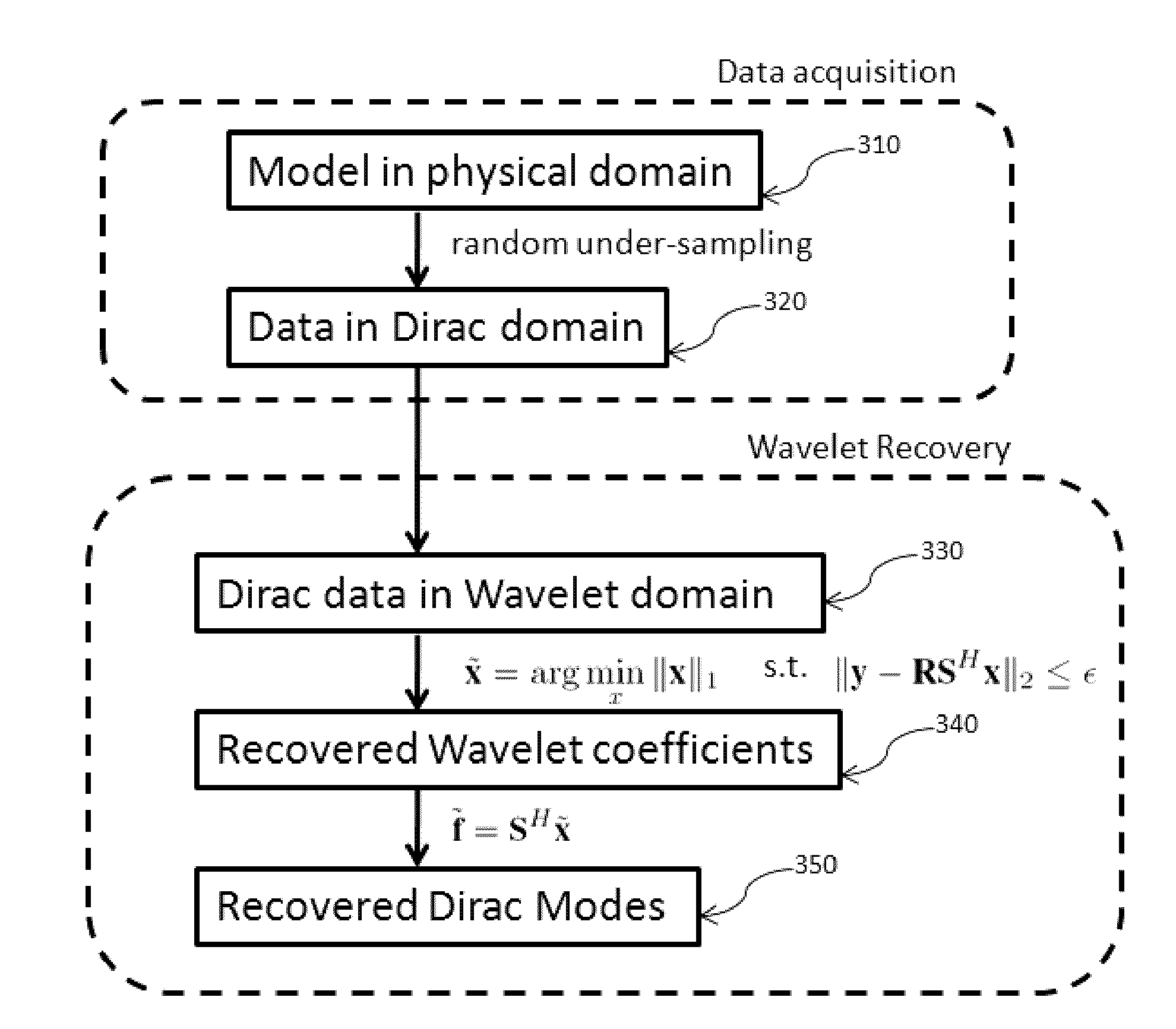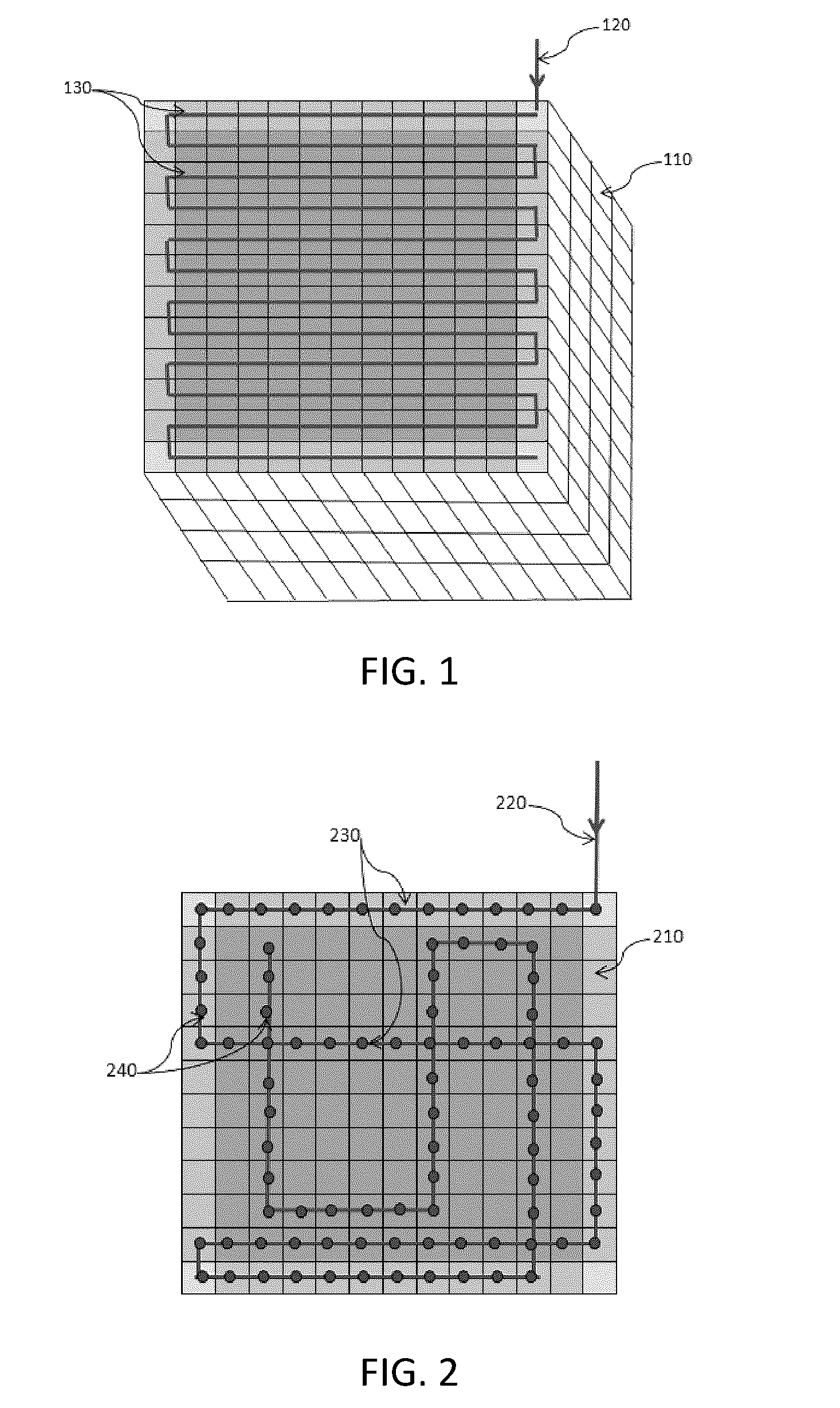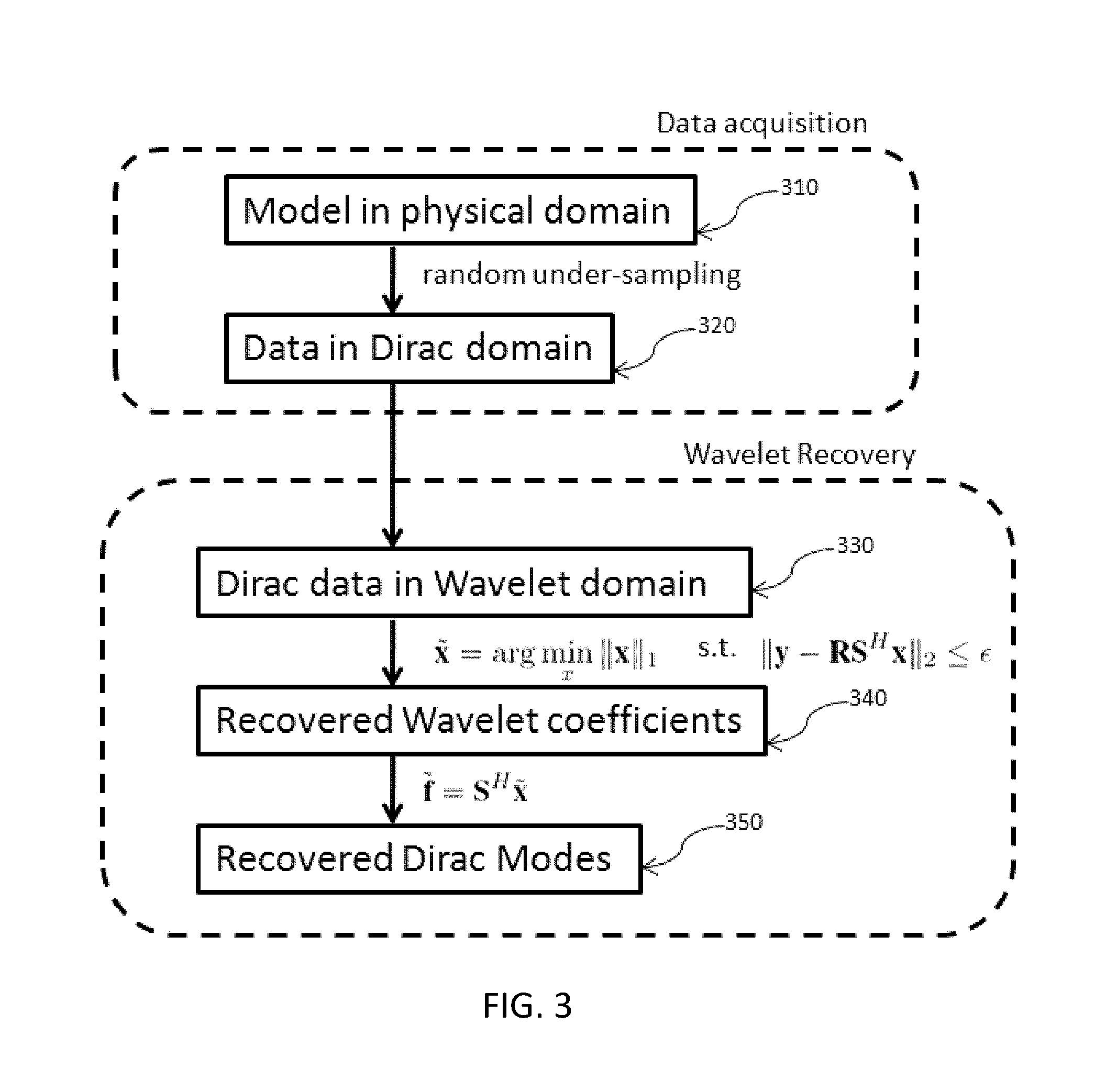System and method for rapid oct image acquisition using compressive sampling
a compression sampling and image acquisition technology, applied in image data processing, diagnostics, sensors, etc., can solve the problems of increasing the likelihood of image corruption from motion artifacts, long scan times, and inconvenient scanning schemes
- Summary
- Abstract
- Description
- Claims
- Application Information
AI Technical Summary
Benefits of technology
Problems solved by technology
Method used
Image
Examples
examples
[0072]A full 3D OCT original image volume (f) was acquired by raster-scanning the optic nerve head of a healthy male subject using OCT. An example of a transversal slice, or C-scan, extracted from the OCT volume is shown in FIG. 4A. To simulate the sparsely sampled OCT image volume (y) that would be acquired by a method of randomly skipping horizontal and vertical raster-scan lines to rapidly sub-sample the desired volume, a binary restriction mask R is applied to this full OCT image f. This mask R consists of vertical and horizontal lines with random (but fixed) placing. Five levels of restriction mask removing 23, 35, 53, 61, and 75 percent of sampled OCT data and corresponding to sub-sampling rates of 77, 65, 47, 39 and 25 percent, respectively, were created, and were applied to the original image volume to generate five different sub-sampled volumes y. An example of mask R that discards 53% of the original samples to represent a 47% sub-sampling rate is shown in FIG. 4B where th...
PUM
 Login to View More
Login to View More Abstract
Description
Claims
Application Information
 Login to View More
Login to View More - R&D
- Intellectual Property
- Life Sciences
- Materials
- Tech Scout
- Unparalleled Data Quality
- Higher Quality Content
- 60% Fewer Hallucinations
Browse by: Latest US Patents, China's latest patents, Technical Efficacy Thesaurus, Application Domain, Technology Topic, Popular Technical Reports.
© 2025 PatSnap. All rights reserved.Legal|Privacy policy|Modern Slavery Act Transparency Statement|Sitemap|About US| Contact US: help@patsnap.com



